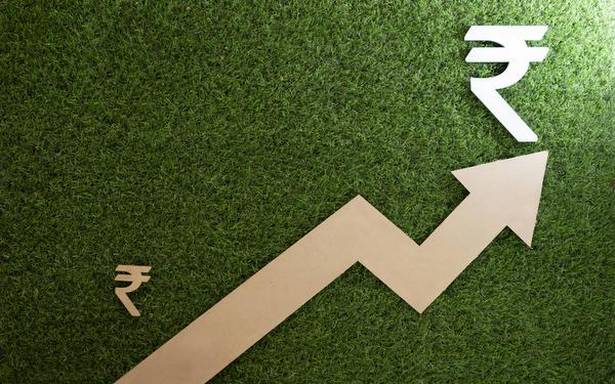Mr Ramesh is 70 years old. He is retired and has no financial dependents. He has been a very conservative investor and has never invested beyond bank fixed deposits, provident fund or insurance policies.
His total portfolio is about ₹1 crore. From this portfolio, he has maximised investments in Pradhan Mantri Vaya Vandana Yojana (PMVVY) and Senior Citizen Savings Scheme (SCSS). He has invested ₹15 lakh in each of these schemes. The remainder of his portfolio (₹70 lakh) is in bank fixed deposits.
The SCSS and PMVVY schemes give him an annual interest income of about ₹2.25 lakh per annum. His requirement is about ₹50,000 per month or ₹6 lakh per annum.
Until now, the interest rate from bank fixed deposits was comfortable enough to bridge the deficit amount (about ₹3.75 lakh). In fact, Ramesh was able to save some money from his interest income, which was also helping his portfolio grow. He hoped this slow growth in portfolio could at least match the inflation in expenses to some extent.
The bank fixed deposit rates have gone down in the recent past. This means his bank fixed deposits will be renewed at lower interest rates, resulting in reduction of income.
Ramesh is worried that he may not be able to sustain on such low interest income and his portfolio may start depleting. Smaller portfolio means lesser income and greater deficit, which needs to be funded by breaking fixed deposits. This can become a self-reinforcing cycle and his portfolio can deplete fast.
Ramesh is looking for a high-income product with low risk.
Recommendations
Let’s look at the options.
Ramesh can go with corporate fixed deposits that may offer a higher rate of interest than bank fixed deposits, but he is not comfortable with credit risk of corporate fixed deposits. Debt mutual funds won’t suit him for the same reason. Moreover, at his level of income, tax efficiency of debt funds does not come into picture either.
Another option is to go with potentially higher-return products such as equity funds, but such products come with higher risk of capital loss. Moreover, since Ramesh needs to withdraw from this portfolio, adverse market movements can make rupee-cost-averaging work against him. Thus, at his age and with his risk appetite, this may not be a good choice. Also, Ramesh is not comfortable with this option.
A third alternative is to open bank fixed deposits with newer banks that are offering a higher rate of interest, but Ramesh is not comfortable with this option either.
Given this background, in our opinion, Ramesh must explore purchasing an immediate annuity plan without ‘return of purchase price’. In this variant of annuity plans, the insurer does not return the investment amount or the purchase price to the investor’s family in the event of investor demise. Thus, the insurance company can afford to pay a much higher rate of interest.
For instance, even during these times of low interest rates, the annuity rate for a 70-year-old will be 10-10.5 per cent pa. To cover the deficit of ₹3.5 lakh, Ramesh would need to invest only ₹35 lakh. And this interest rate is guaranteed for life.
When his PMVVY and SCSS mature, this money can either be put back into the respective schemes or into an immediate annuity plan. The immediate annuity plan without return of purchase price will likely generate much higher income than PMVVY and SCSS, at his age.
In fact, the annuity rate for a variant without return of purchase price increases with age. Hence, the annuity rate for the entry age of 75 will be much higher than the annuity rate for the entry age of 70.
To counter inflation, Ramesh can stagger annuity purchases for small amounts in the future.
The caveat with an annuity plan without return of purchase price is that, in the event of early demise, it might look like a waste of money. His family won’t get anything. Therefore, this approach would have been a problem if he had financial dependents or if he wanted to leave this money as legacy. Since he does not have such limitations, an annuity plan without return of purchase price is a good way to maximise income at very low risk.
He will also lose access to this money. This could have been a problem, but he has investments outside of this annuity plan, too.
Another point to note is that GST at 1.8 per cent of the purchase price will be applicable. So, that has to be taken into account while arriving at the purchase price, based on the annuity requirement.
Since Ramesh does not have to worry about income generation now, the remaining ₹35 lakh (₹70 lakh minus ₹35 lakh) can be invested freely. He can consider keeping a portion of this money as an emergency fund. He can even take some risk with this money for growth and build legacy for his family.
Alternatively, he can simply put the remaining ₹35 lakh in bank fixed deposits. His portfolio will gradually keep growing. As his income requirements grow, he can take some money out of FDs and buy an annuity plan to bridge the income deficit.
The writer is a SEBI-registered investment advisor at personalfinanceplan.in
This article is auto-generated by Algorithm Source: www.thehindubusinessline.com


